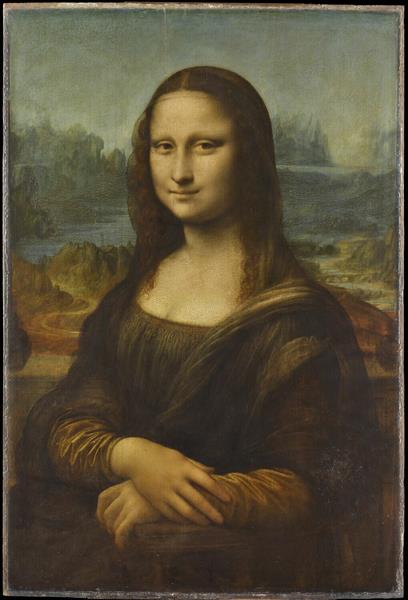Mona Lisa
Louvre, Paris, France
Vinci Leonardo da, 1519
The "Mona Lisa," painted by Leonardo da Vinci, is one of the most famous and enigmatic portraits in the history of art. Widely believed to be a portrait of Lisa Gherardini, a woman from Florence and the wife of a wealthy merchant named Francesco del Giocondo, the painting is also known as "La Gioconda." Its significance and meaning have been the subject of much speculation and interpretation over the centuries.
Leonardo da Vinci employed innovative techniques in the "Mona Lisa," such as sfumato, a method of blending colors and tones seamlessly. This technique gives the portrait its lifelike quality and soft transitions between light and shadow, contributing to the painting's mysterious and captivating appearance. The subject's enigmatic expression, particularly her ambiguous smile and direct gaze, engages viewers in a personal and contemplative manner, leading to various interpretations of her mood and thoughts.
Some art historians believe that Leonardo intentionally imbued the "Mona Lisa" with layers of symbolism and ambiguity. The landscape in the background, with its winding paths and distant mountains, may represent an idealized vision of nature and humanity's place within it. The painting embodies Renaissance ideals of humanism, focusing on the individual's inner life and the beauty of the natural world, reflecting a shift towards more naturalistic and expressive representations of people.
Over time, the "Mona Lisa" has become a cultural icon and a symbol of artistic genius. It has inspired countless reproductions, parodies, and references in popular culture, cementing its status as a masterpiece. Leonardo's meticulous attention to detail and his knowledge of anatomy, optics, and geometry are evident in the painting. The composition and proportions of the "Mona Lisa" reflect his scientific approach to art.
